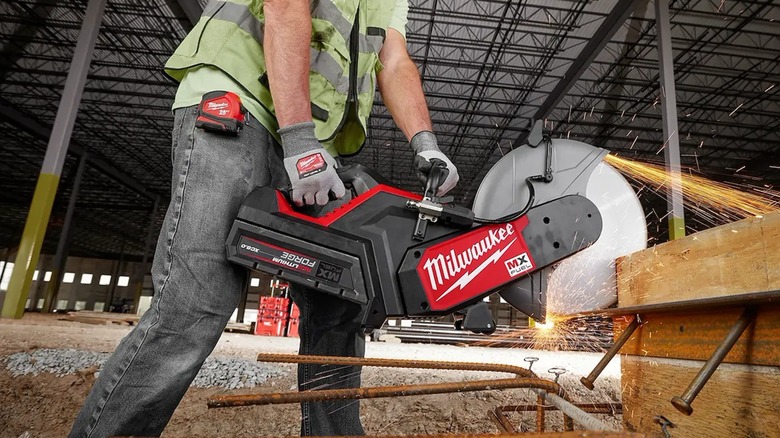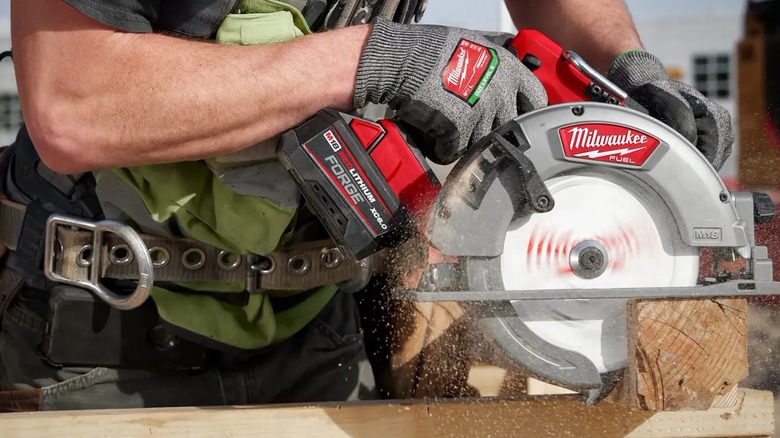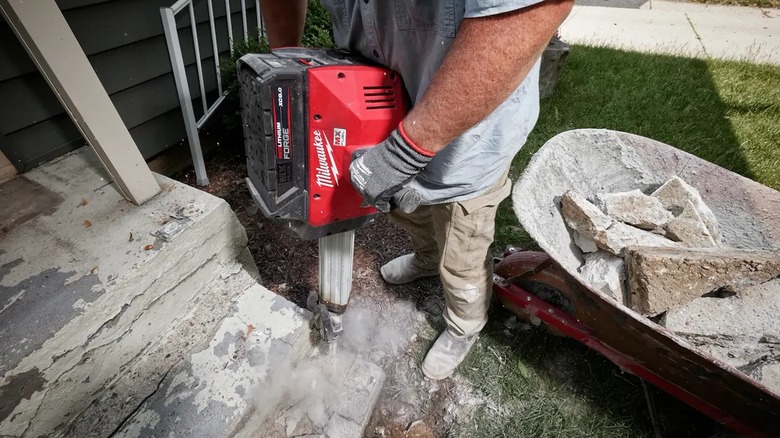What Is Different About Milwaukee Power Tools Forge Batteries?
Whether you're just starting to explore the world of battery-powered cordless tools, looking to upgrade your collection, or already have a complete set of Milwaukee power tools in your garage, you've probably heard about Milwaukee's new line of Forge batteries. If not, you should know that Milwaukee's Red Lithium Forge batteries are redesigned with new battery cell technologies to deliver more power, faster charging, and longer life.
M18 Forge batteries are compatible with the entire M18 lineup, which includes all 250 M18 solutions offered by Milwaukee Tool. Milwaukee Tool engineers also designed a new MX Fuel Forge battery system to work with its larger MX Fuel power tools. Both Forge battery types offer improved performance compared to the standard battery offering.
Another benefit of the Forge battery system is the associated Super Charger, capable of recharging MX Fuel Forge batteries up to two times faster than the standard MX Fuel battery charger. The M18 Forge Dual Bay Simultaneous Super Charger is even more efficient, powering M18 Forge batteries up to six times faster than a standard M18 charger. In addition, both charging systems still work with all the battery types within their respective groups.
What makes Milwaukee's M18 Forge batteries better?
Milwaukee's M18 Forge batteries use pouch-cell battery technology to deliver more power from a smaller package. In addition, M18 Forge pouch-cell battery construction reduces resistance across its internal connections to deliver higher potential electrical current, longer run time, and cooler operation when charging or under load.
Pouch-cell batteries are just what they sound like — a pouch containing battery chemistry (lithium-ion in this case) instead of it being in a hard case like more familiar batteries. Battery University says pouch-cell battery technology has been around since 1995 and delivers the highest level of packaging efficiency of any battery type. While there is some risk of pouch swelling due to excess gas generation while charging or discharging, it's mostly mitigated with proper manufacturing techniques.
Milwaukee claims its M18 Red Lithium Forge XC6.0 delivers more power than its M18 High Output HD12.0 battery and provides the "best durability in harsh jobsite environments." The durability claim stems in large part from its patented ingress coating designed to prevent dust, water, and chemical intrusion into the battery case. Additionally, the Forge battery case is made of upgraded plastic that resists damage caused by common oils, greases, and solvents typically found in workplaces.
How are Milwaukee MX Fuel Forge batteries different?
As for the MX Fuel Forge lithium-ion batteries, they use tabless cylindrical cell construction. If you're wondering about the benefits of going tabless, as Bosch Auto Parts explains on their website, the conventional "tab" cell construction uses narrow connection points to attach a battery's internal power storage components to its anode and cathode (or positive and negative terminals). This simple method, as Bosch elaborates, results in a "bottleneck" that interferes with the smooth transfer of power, resulting in electrical resistance that causes heat and reduces efficiency.
Tabless cells, on the other hand, eliminate the concentrated connection points of the tabbed variety, resulting in "countless paths" for energy transfer from the electrical storage structure inside the battery to its terminals, reducing the resistance of each cell by "around 50%."
With that in mind, Milwaukee offers its MX Fuel Forge batteries in XC8.0 and HD12.0 versions. While the Forge HD12.0 is Milwaukee's most capable MX Fuel battery to date, the Forge XC8.0 offers 33% more run time in a smaller, lighter package than the standard MX Fuel SC406 (SC6.0) battery. Charging times from depleted to 100% are 45 minutes for the MX Fuel Forge XC8.0 and 65 minutes for the MX Fuel Forge HD12.0 using the new MX Fuel Super Charger.


